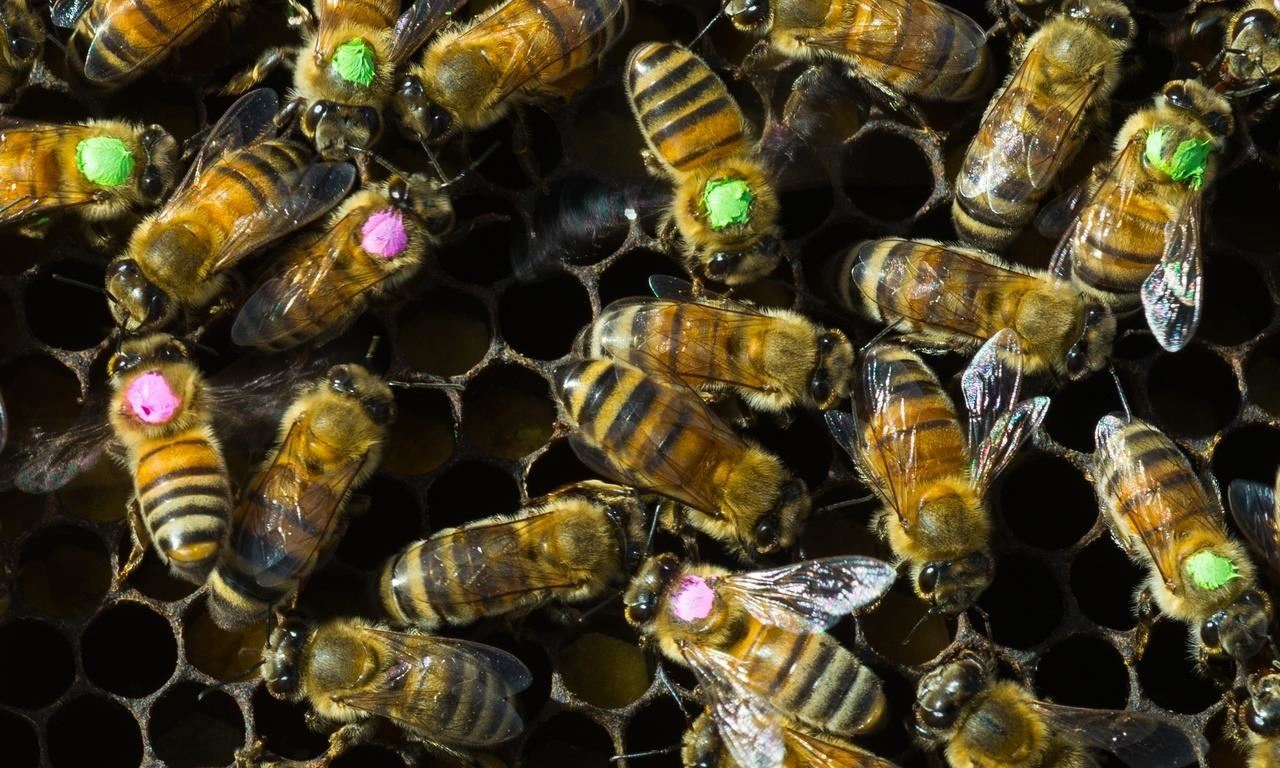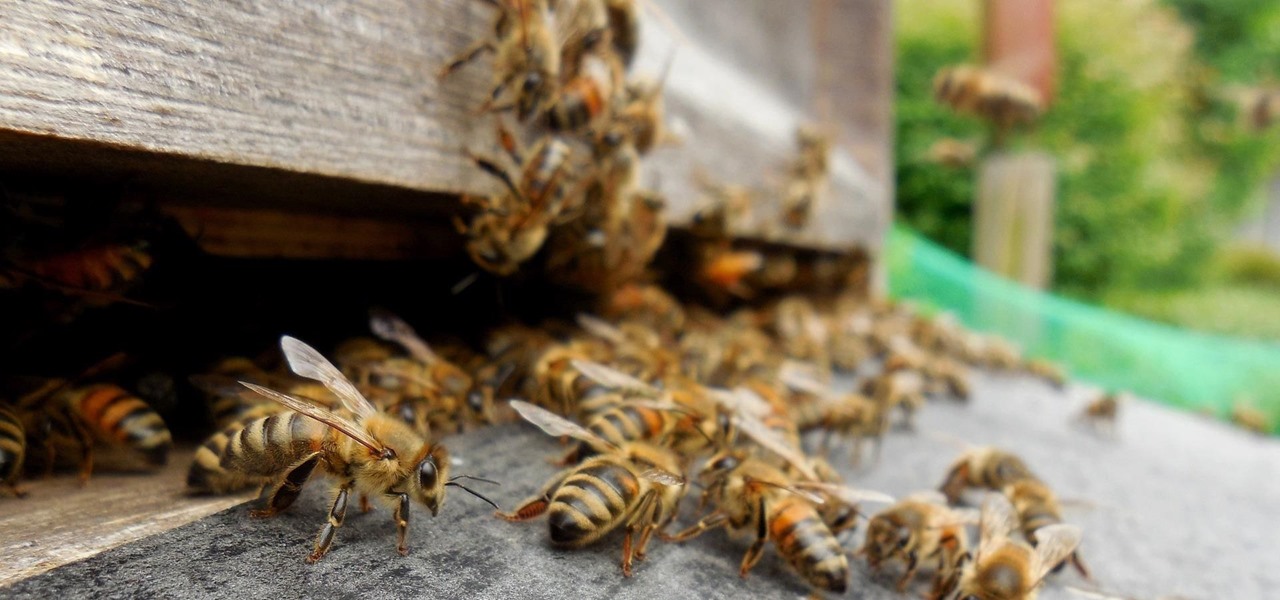Add antibiotics to the possible list of culprits responsible for honeybee decline around the world.
While it may come as a surprise, antibiotics are commonly mixed into feed used by commercial beekeepers to maintain their hives. In a recent study published in PLOS Biology, researchers from the University of Texas at Austin found antibiotics used to treat honeybees may be a contributing factor in individual bee death and colony collapse.
Colony collapse disorder is an overarching term that describes worker bees that suddenly abandon their hive, leaving a queen, a limited amount of food, and nurse bees to care for immature bees. With no worker bees, the hive collapses and the queen dies.
The collapse and loss of honeybee populations is a global phenomena. Pesticides, mites, genetically modified organisms, insecticides, and even the use of high-fructose corn syrup commonly used as honeybee food in commercial hives have been named as contributors to the weakening health of these essential insects. From the variety of studies being done on this, many researchers believe there's not one cause, but a variety of factors that work together—from toxins to infectious diseases—to negatively impact bee and colony health.
The new study specifically found a correlation between antibiotics in feed and the decline of bee colonies, potentially because of negative impacts on their gut bacteria.
"The bee microbiota, like human microbiota, help to digest plant compounds. Additionally, both the human and bee gut microbiomes have been perturbed repeatedly by antibiotics," first author on the study Kasie Raymann, a postdoctoral fellow at UT Austin's Center for Computational Biology and Bioinformatics, told Invisiverse in an email. "However, the bee gut microbiome differs from humans and other mammals in that it is far simpler, making it a tractable model that can provide insight into the microbiota of humans."
In the United States, beekeepers lost 40% of honeybee colonies in the year between April 2014 and 2015. In the following year, that number rose to 44%, with losses during the summer almost as high as in the winter.
In a statement about the colony loss survey, Jeffery Pettis, a senior entomologist with the USDA, noted:
These losses cost the beekeeper time and money. More importantly, the industry needs these bees to meet the growing demand for pollination services. We urgently need solutions to slow the rate of both winter and summer colony losses.
The UT Austin study used 800 adult worker bees from one hive. Dividing the bees into two groups, the bees were harmlessly chilled and marked with paint. Green was used to designate bees to be studied, but not treated (the control group), and pink dots were painted onto bees treated with the antibiotic tetracycline, an antibiotic used with bees as a preventative measure against the bacteria Paenibacillus larvae that is responsible for foulbrood disease.
Provided to bees with food for more than 50 years in the US, the use of tetracycline has, not surprisingly, resulted in resistant genes in bacterial strains found in the gut of American bees. These resistant genes are not found in bee gut bacteria in countries that do not enrage in widespread use of antibiotics for beekeeping.
Once treated with antibiotics for five days through spiked sugar water, some of the honeybees were returned to the hive, while others were maintained in a sterile laboratory setting. Over a seven-day period of time, the microbiome, or gut bacteria, of marked bees was sampled for the impacts of antibiotic exposure and the effect of the antibiotic on the diversity and quantity of their gut bacteria.

The results of the study were perhaps not unexpected. Findings include:
- Of the eight major species of bacteria in the honeybee gut, the abundance of four species were reduced by antibiotic treatment. Bees in the untreated control group had roughly five times more gut bacteria than those treated with tetracycline. Interestingly, none of the core bacterial species of the honeybee gut was entirely killed by antibiotic treatment, a result the authors suggested could have been "enhanced by the presence of antibiotic resistance."
- Treated bees showed a major disruption in the composition of their gut bacteria that did not resolve during the testing period. The authors suggest that, counterintuitively, pathogens may have more opportunities to invade the microbiome of honeybees when they're given ongoing treatment with antibiotics.
- In an infection experiment, bees treated earlier with antibiotics and exposed to one of these opportunistic bacteria, Serratia, showed higher mortality rates than control group bees. Serratia also displays resistance against tetracycline, which could give it a natural inroad into bees hampered by microbiome disruption from administration of antibiotics.
- In natural beekeeping settings, bees are dosed with tetracycline three times in the spring and autumn, for a period of four to five days at a time. The dosage given to the bees in this experiment was considered less than what is normally provided to kept colonies. In this study, bees treated with antibiotics were half as likely to survive the week after drug treatment, compared to untreated hive-mates.
Taken all together, these results suggest that the use of antibiotics boosts death rates in honeybees already in decline. In a press release, study resesarcher Nancy Moran, a professor at UT Austin's Department of Integrative Biology, said:
Our study suggests that perturbing the gut microbiome of honeybees is a factor, perhaps one of many, that could make them more susceptible to declining and to the colony collapsing. Antibiotics may have been an under-appreciated factor in colony collapse.
While the Food and Drug Administration slightly altered labeling requirements for use of antibiotics with minor species like bees in November 2016, the move does not impact the common practice of antibiotic use by beekeepers.
With the future of food production on the line, more research and better options for honeybee stewardship are a must. As Raymann told Invisiverse:
Although our results suggest that antibiotics might harm bees in some instances, there are many other factors affecting the loss of honeybee colonies. These include insecticides and loss of foraging habitat. These factors also affect native species of wild bees, which are even more threatened than honeybees. In the last few years, there has been a push to investigate the causes behind colony collapse, and several regulations have been put in place in different countries around the world. I hope that these and future efforts will help to decrease the decline of honeybee colonies. However, there is still a need for more research, as we do not yet have all the answers.
Just updated your iPhone? You'll find new emoji, enhanced security, podcast transcripts, Apple Cash virtual numbers, and other useful features. There are even new additions hidden within Safari. Find out what's new and changed on your iPhone with the iOS 17.4 update.


























Be the First to Comment
Share Your Thoughts